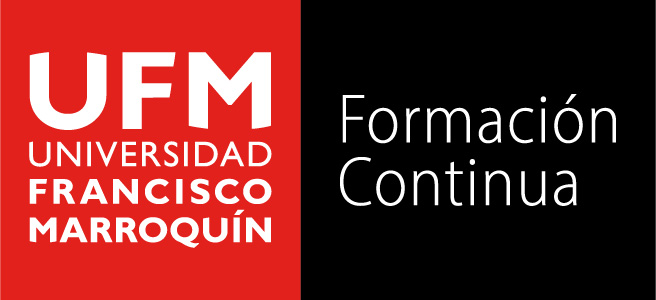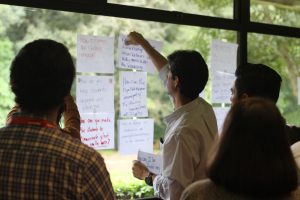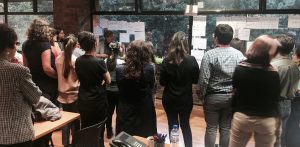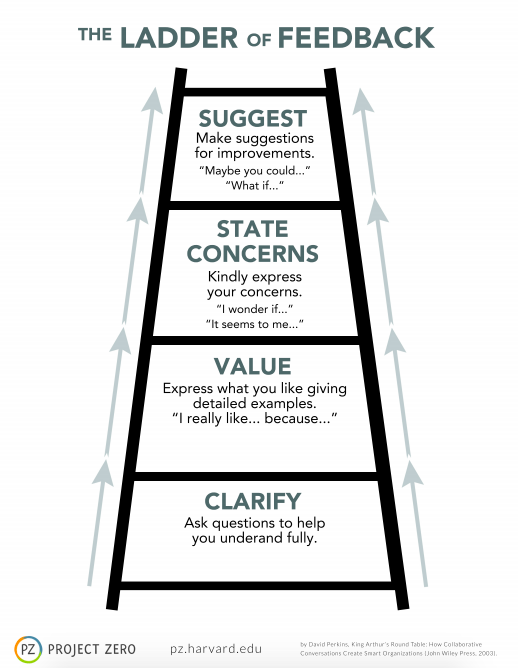The gallery of ideas or problems is a tool to invite the participants to generate ideas, cluster them and see where their interest lays. It allows them to take ownership of the meeting, class or event.
The whole process can take up 20 minutes or more, depending on the number of participants and if you want to interject process (in this case you will have pauses: “process stop”), or comment on the Post-its being stuck on the wall. Be aware that it usually takes more time that expected.
In case of gallery of problems:
It is a tool that allows you to identify the problems first instead of heading straight for the solution. It is more fun to talk about the negative side of things, and it is much easier to point out what does not work. The trick is then to turn the answers around and start looking for solutions or desired behaviors. It is like taking a zigzag to the top of the mountain instead of heading straight.
NOTE! Focus on a negative which is in the control of the participants. Focus on the positive of the institution or areas outside the control of the participants.
Be careful to put the negative always in the influence zone of the participants, never outside. Eg. “What makes for a bad teacher?” and “What makes UFM great?” in case you work with teachers, “What can make UFM fail?” in case you work with the board of directors. If you look for bad things outside of your influence zone it is just about criticizing and it makes for a negative spiral.
The tool generates a lot of options. It is peculiar how sometimes only one person comes up with a problem, key aspect, element, and then in the dot-voting many other people vote for it. People complement each other in their thinking. The tool allows for a lot of ideas to bubble up before the owner/teacher comes in.
This tool puts the ownership in the hands of the participants and gets everybody involved. It does away with language problems or barriers and personality differences (shy or introvert people). The Post-it is the big neutralizer.
This is a very structured and directed exercise.
INSTRUCTIONS:
- Ask the question (ideally problem-oriented)*
- Check for understanding of the questions on behalf of the participants
- Ask for generation of Post-its – if needed in two different colors. Make clear that people should write only 1 idea per post it.
Give people time: not too much or they will generate too many post-its, not too few or they will not generate enough.
- Explain the process (guidelines for the participants):
- Look for affinities: twins (exactly the same) and cousins (similar but not the same)
- Read your post-it aloud. No posting without reading. Only the person with the microphone*** who got hold of the microphone speaks.
- Check for understanding of the other participants
- In case there are no twins or cousins, start a new category
- Look for somebody you know will model well to start off.
- Stay near the board in the beginning. Then you step out of the circle and stand at the back. Participants should not be presenting to you, but to their peers.
- If a participant helps you to point out a mistake with regard to cousin-twin, acknowledge him.
- If a participant changes opinion while reading, ask him to write it down on the Post-it.
- If the Post-it is too vague, point it out and ask the person to clarify. Every Post-it should be a meaningful unit and a step to the solution.
- Invite some participants to start clustering. The others stand by and talk. Ask the participants to put titles to the clusters.
*** The use of microphone is excellent both to ensure that 1 persons speaks at the time and that everybody is able to hear the person who is presenting his post-it.
- Dot-voting: Ask everybody to distribute two or three dots over the Post-its with the ideas they think are most important, they would like to work on. Clarify if you want the dots on the categories or individual post-its. If people put their dot on the individual post-it you have more precise information. You can use just pencil dots, or distribute stickers, which will stand out more.
Never let the station/event/meeting owner put his dots first.
You can also ask people to put their dots or in this case names on topics/skills they control and could teach others about, and in another color on what they need help with.
Example: What went well? (yellow Post-it) Even better if? (blue Post-it): people assigned their names on skills they would be working on later and explaining to others.
—) the dots point out where the passion, priorities and consensus lies.
—) the dots help to reduce the number of items to a workable number and to select top choices from a larger list of items; the visual display can help facilitate dialogue and increase participation in group decision-making.
- Bake a break: invite the people to have a cup of coffee while you talk with the owners and define the subjects that you will keep working on, or adapt the program of the session.
- Ask people to opt in on a topic and get together: now you have all your problems identified and people get assigned to work on the solutions.
- Figure out what the real problem is: root cause analysis. Or is it just smoke?
Using the 5 WHYs and the circles of influence.
- Work on the solution
source: Mina Merkel
EXAMPLES OF QUESTIONS:
- What went well? (yellow Post-it) Even better if? (blue Post-it)
- What have you used in class? (yellow Post-it) What would you like to know more about? (blue Post-it)
- What can go wrong when we facilitate? //What do best facilitators do?
- What do bad teachers do?
- How could your students derail their learning?
- Think of a good experience in a facilitative class. What did the facilitator do?
- What can make an organization fail at supporting a school.
- What are your expectations for today / this meeting / this workshop?
POSSIBLE USES IN THE CLASSROOM:
- In the beginning of a new unit, class or year: to find out where the interests lay of the students, the previous knowledge about the topic, the skills, the expectations… You could then let them choose what they want to work on, or students who know about certain topics could opt in to facilitate those topics.
- In the end of a class, year… : to revise what has been learned: what do students remember? What do they need more information or practice on? Again students could opt in to talk about what they understood well to students who need more time with those subjects.
�
En Español:
- Se hacen la preguntas
- Revisar si se comprendieron las preguntas
- Pedir que generen Post-its: poner atención al uso de los dos colores y que únicamente escriban una idea por post-it.
- Explicar el proceso para crear la galería
- Buscar afinidades: gemelos o primos
- Leer en voz alta. No se colocan Post-its sin leer. Cuidar la disciplina en esta parte de la actividad. Solamente la persona con el micrófono*** habla.
- Revisar si se ha comprendido lo anotado
- Si no hay gemelos o primos, se inicia una nueva categoría
- Identificar a la persona que pueda servir de modelo para iniciar el proceso de pegar los Post-its
- Quedarse cerca del pizarrón en el inicio de la actividad. Después, alejarse del círculo y quedarse atrás. Los participantes que van colocando y explicando su post-it deben dirigirse a los asistentes, no al facilitador.
- Si un participante tiene la iniciativa de señalar errores en la atribución de afinidades entre post-its (gemelos, primos), validar su aporte.
- Si un participante cambia de opinión mientras lee su post-it, pedirle que escribia la idea nueva en otro Post-it
- Si el aporte del participante es muy vago, señalarlo y pedir que clarifique. Cada Post-it debe ser un aporte en el camino a generar soluciones.
- Invitar a algunos de los asistentes a hacer agrupaciones de temas (clusters). Los demás se quedarán conversando a un lado. Después, pedir la atención general de todos para colocarle nombres a las agrupaciones de temas.
Decir algo parecido a esto:
“Ahora ustedes tienen sus problemas identificados. Iniciemos a trabajar en las soluciones. ¿Sobre qué problemas quieren trabajar?
*** El uso del micrófono tiene dos ventajas: Solamente 1 persona habla y se le puede escuchar bien.
- Votar colocando un punto en el Post-it que identifica el tema que interesa trabajar (solucionar), lo que consideren más importante: se le pide a todos que coloquen dos o tres puntos en los Post-its. El dueño del grupo (cluster) de post-its no debiera empezar a colocar puntos. Los puntos reflejarán los temas que generan más pasión y en los que hay más consenso.
You can also ask people to put their dots or in this case names on topics/skills they control and could teach others about, and in another color on what they need help with.
Example: What went well? (yellow Post-it) Even better if? (blue Post-it): people assigned their names on skills they would be working on later and explaining to others.
- Bake a brake: se invita a los invitados a tomar café mientras se prepara con los encargados del cluster los aspectos en los que se continuará trabajando.
- Pedirle a las personas que identifiquen el cluster (tópico) con el cual quieran trabajar.
- Delimitar cuál es el problema real: analizar las causas desde la raíz. Diferenciar aquellos problemas que sean solo distractores de problemas más profundos.
Using the 5 WHYs and the circles of influence: I can do it – we can do it – influence – worry
- Trabajar en la solución
Lineamientos para los participantes en español
- Alguien lee su Post-it azul en voz alta y lo pega en el crista
- Los demás buscan afinidades en sus Post-its: Si tienes un
- gemelo (exactamente igual), lo lees y lo pegas encima
- primo (similar pero no igual), lo lees y lo pegas al lado
- Si no hay más afinidades, comienza una nueva categoría.
- Antes de pegar el Post-It: leelo en voz alta y comprueba que los demás te han oído y entendido.
Feedback Pablito Velásquez
Some process insights that I gathered…
- Giving them full ownership and stand a side works fantastically! I was surprised of how much they became engaged in the process… I wrote 0 post-its and made no categories… they did it all!
- The Gallery of Problems, really helped us to focus, it was like emptying the box of materials and then when voting it gave us a frame to work.
- The guys learned really really fast the methods and embraced them! At some point they were suggesting to use the voting and making categories themselves!!! This was just an hour into the process! The Twins and Cousins worked so well and they were so engaged that I had no problem leaving the station for a couple of minutes to get coffee, water or going to the bathroom. They were doing it so well, and they were policing each other to make it work.
- Although the «but» was present in the beginning, constant invitation to embrace other people’s ideas worked great… by the end they themselves were «correcting» the «buts» «no’s» and «that won’t work».
- You are right, the post-its, they are the great equalisers! I had two brothers, with very different personalities. One very talkative, the other quite shy. Forcing them… or rather inviting them to write on the post-its made one control his lengthy interventions and the other had a cue to get into the dialogue.
- It is supremely important to have control of your space… I had arranged the space prior of their arrival and when the lead owner arrived he started to change everything! I was a bit shy at the beginning, but later I asked for his trust… I said that the space was arranged in such a way for a reason… that it will help us to achieve results and that please leave as I had it before. He looked hesitant but he agreed. I’m happy I pushed for this, it really made a difference (at least for me).
- Although I think it was a great session, I do believe we should be aware that this processes are energy draining… by the end I was barely standing ( look at my eyes in the picture! hahaha). We should have a rule like air pilots… no taking a plane without 8 hours of sleep before! hahaha Really, at some points I was really making an effort not to be grumpy, pushy or tired faced (which normally is not an issue for me).
- I wish I had more tools in my box… the four that we learned worked amazing and I can’t imagine how much better it should had been with more tools. I created two for this even that might be useful for you. a) Fill in the gaps… I gave them a sentence with «gaps» and they had to came up with words that filled them. For example » UFM is ??? that ??? to ??? with ???.» It was a fun «game» and yielded acceptable results in the end. b) Play the Role… I invited participants to describe every action they had to perform in order to achieve an end. For example: «If you want to order Pizza, what do you do» and the person described » Ok, I search the phone on FB, pick up the phone, talk to the person… wait in my house… receive the pizza, open the box… etc» At the same time the other participants were writing all the ideas that came to mind just by analysing that chain of actions. Arguably was the moment when they unpacked the most of previously not addressed problems.
- It is amazing how you can get in the role of facilitator… I think there is even a hint of adrenaline rush because I was dying of hunger prior to start (not recommended by the way) but once we started my hunger went to china! I got it back the minute after the final clap! hahaha
- I felt so happy that in the beginning they told me that possibly some of the participants had to leave earlier, but in the end everyone remained until we finished and nobody went away more than 5 minutes. My guess it was that rather than work, it was more like fun for them.




